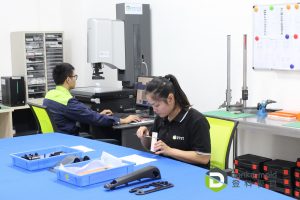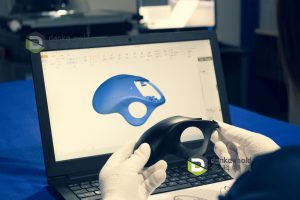As an injection molding company, even what we usually do is rapid tooling and small volume molding production for customer to do market testing, we deeply know that part quality is the most important thing to our customers, It is not difficult to make high quality parts for one or two projects, but it’s not easy to maintain or keep all the parts with high quality for all the projects. So how to achieve that? A standard quality control process must be executed sternly. Quality is essential regarding the injection molding our company requires for various products. They will judge our company based on whether the products and devices work properly.
First of all, we should make it clear that, what is “high quality” for injection molded plastic parts? In our opinions, it includes: 1) Correct & consistent dimensions within required tolerances; 2) No burrs/flashes; 3) Consistent color; 4) Correct textures or glossiness; 5) low scrap rates; 6) stable package.

What we should do to the quality control for an injection molding project?
- DFM (Design for Manufacturing) analysis
Injection molding is a specialized process that uses molten material, such as ABS, PP, POM, Nylon, Polycarbonate, Acrylic, etc. that is then placed into a mold to create the part. The mold is filled under certain pressure and then cooled so it can solidify. It will then be removed from the mold. The process seems very simple, but many issues like gate mark, silver mark, sink mark, short shot, burrs will come out during the molding. Professional DFM analysis can point out most of these issue in advance, to give customers some suggestions to optimize the part design, so as to improve the molding feasibility.
Tooling engineer should work with the customers to understand their design goals. How our manufacturing analysis can improve quality of injection-molded parts:
- Identifies those uneven walls
- Identifies features that need sufficient draft
- Mold flow analysis to check the short shot and welded lines issues.
- Select gate location
- Select ejector pin location
- Select qualified and certified tool steel material and plastic pellet suppliers
Tool steel is not just critical to the tool life, but also to the part’s surface, if using fake material, tool life will be shortened due to the bad strength, part’s surfaces will also be not good because of the insufficient hardness.
- Processing tracking. Project engineer should trace the whole process from mold design to mold making and injection molding. Because he is the one who most familiar with the parts and molds, once there some problem during manufacturing, he can give the best suggestion to solve.
There are several different tests and control points positioned throughout the manufacturing process to make sure the finish product is up to the highest level of standards.
- Sink Marks. Different problems can occur throughout the injection molding process, based on the tool temperature, the material used, the molding parameters and several other variables. Sink marks is the most common issue. They are small indentions or depressions that can happen in thicker areas of an injection molded part. The reasons are usually: insufficient cooling time, low pressure, etc.
- Gas Marks and Burn Marks. They usually occur when the plastic is left in the molding cavity for too long and is scorched. Sometimes it also occurs when the hot compressed air inside of the mold is unable to escape out of the mold.
- Short Shots and burrs/flashes. Short shots occurs when not enough plastic is used in the mold, or some very narrow gaps, or insufficient shooting pressure. Burrs/flashes occurs when parting surfaces weren’t fitted perfect, or too much shooting pressure.
- Burn marks are labeled as a discoloration that appears on the visible surface of the injection molded part. They may be a dark, a black, or a dark red / rusty color on the surface when the material is overheated and burns against the surface of the injection mold.
- First article inspection, processing inspection and final inspection must be executed, and all the inspection results need to be recorded. First article inspections are performed to verify part features prior to full production. Once full production begins, inspections of tooling are completed by our mold masters and molding operators. First samples and final parts should be kept in the sample cabinet for reference next time.
About the inspected issues, besides dimensions, surface finish and color, the assembly also need to be checked if it connects to other components.

To ensure that the plastic inspection molding process is conducted properly to create high grade product, standard quality control process must set and carried out regularly. Customers always unwilling to change their suppliers when product and services are good, even if the price is high. A quality product creates unshakeable customer loyalty that bring constant leads. When customers find a product they trust, they comeback, place order repeatedly, and recommend the product or service to others.
